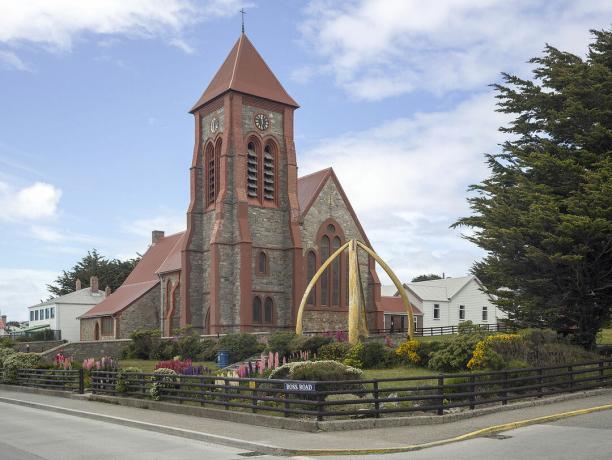The Middle Ages period was marked by the strong influence of the Catholic Church on the life, politics and economy of the entire society. One of the actions that exemplifies the power of action of ecclesiastics was the Medieval Crusades.
The movement was encouraged by Pope Urban II to curb the expansion of the Turks into the Holy Land. The Church leader then summoned the army composed of the nobles to move into the region and regain possession.
Index
- What were the Medieval Crusades?
- How were the Crusades organized?
- What were the medieval crusades?
- Consequences of the Crusades
What were the Medieval Crusades?
The Holy Land was part of the Roman Empire until the 7th and 8th centuries, in the face of Islamic conquests. Until 10701, Christians were allowed to promote Christian pilgrimages throughout the region. However, it all ended with the Byzantine defeat at the battle of Manzikert to the Seljuks.
Troops sent to Palestine with the aim of regaining Christian access to Jerusalem are called Crusades. The beginning of the conflicts took place after the domain of the region, considered sacred to the Christians, by the Seljuk Turks.
From then on, the pilgrimage of Europeans was impeded by the Turks who captured and killed those who crossed the region moved by faith. Conflicts over the Holy Land extended between the 11th and 14th centuries.
Basically, the idea of the Catholic Church was to regain its influence, from the moment the Islam limited it to Europe and Anatolia. Another point is that the term Crusades itself was not used at the time of the conflicts. The heart of the movement was the retaking of the Holy Land, which is why it was called the Holy War.
How were the Crusades organized?
In the face of the Seljuks, the Byzantine Emperor Alexios I Commeno asked Pope Urban II for help at the Council of Piacenza in 1095. The Catholic leader then organized a second council, the Council of Clermont, recruiting men for the expedition.

Officially, the army would be formed by knights selected from among the members of the nobility. But before the departure of the First Crusade, low-born peasants and knights were lured by the Church's promise of spiritual recognition and rewards. They then formed their own army and went out in the so-called Crusade of the Beggars.
The lack of organization and low weapon power meant that this uprising lost the battle and the few survivors returned home. With the end of the First Crusade, the Order of Knights Templar was created.
- Free Online Inclusive Education Course
- Free Online Toy Library and Learning Course
- Free Online Math Games Course in Early Childhood Education
- Free Online Pedagogical Cultural Workshops Course
The organization had a preponderant role in the upcoming fights. It is worth remembering that, after the defeat of the first crusade, a French army commanded by Godofredo de Bulhão joined the fight for the cause heading east.
Uniformed with the emblem of the cross, these men massacred the Turks and managed to take Jerusalem, regaining access to the pilgrims. Other clashes took shape, damaging relations between the West and the East.
The relationship between the continental portions was becoming eroded due to the ambition of the Crusaders and the violence of the conflicts. The Catholic clergy ended up losing control of the situation and only the Sixth Crusade (1228-1229) took place peacefully.
The point is that, over two centuries, even children were part of the conflicts. Great kings such as Richard Coeur de Leão and Louis IX joined their armies in struggles that, in the end, were not so successful.
What were the medieval crusades?
In all, there were 15 expeditions undertaken by the west towards the Holy Land. Among all editions, there were crusades in southern Spain and Italy, as well as campaigns by Teutonic knights against pagan strongholds. In short, the relationship of the crusades is:
- Popular Crusade or Beggars (1096) - Unofficial
- First Crusade (1096 -1099)
- 1101 Crusade
- Second Crusade (1147 - 1149)
- Third Crusade (1189 - 1192)
- Fourth Crusade (1202 - 1204)
- Albigensian Crusade (1209 – 1244)
- Children's Crusade (1212)
- Fifth Crusade (1217 - 1221)
- Sixth Crusade (1228 – 1229)
- Seventh Crusade (1248 – 1250)
- Pastors Crusade (1251 - 1320)
- Eighth Crusade (1270)
- Ninth Crusade (1271 – 1272)
- Northern Crusades (1193 – 1316)
Consequences of the Crusades
The main consequence of the Crusades was the hardening of relations between Christians and Muslims in the Middle Ages. Despite the end of the conflicts, hostility and tensions between the two peoples remained.
On the other hand, European trade was intensely driven by the Crusades. However, their bases were under the sacking of cities by knights who set up fairs along trade routes on their return from the Orient.
These same knights, too, brought knowledge acquired in the East, especially under the influence of the Saracens, Arabs who inhabited the Iberian Peninsula. Still from a cultural point of view, the crusades developed a new type of literature.
The works dealt with the stories and heroic deeds of the knights, portraying the wars waged by the cavalry. Among other consequences of the Crusades are the strengthening of royal power and the weakening of the feudal aristocracy.
Also check:
- Beggars Crusades
- Medieval Literature
The password has been sent to your email.


